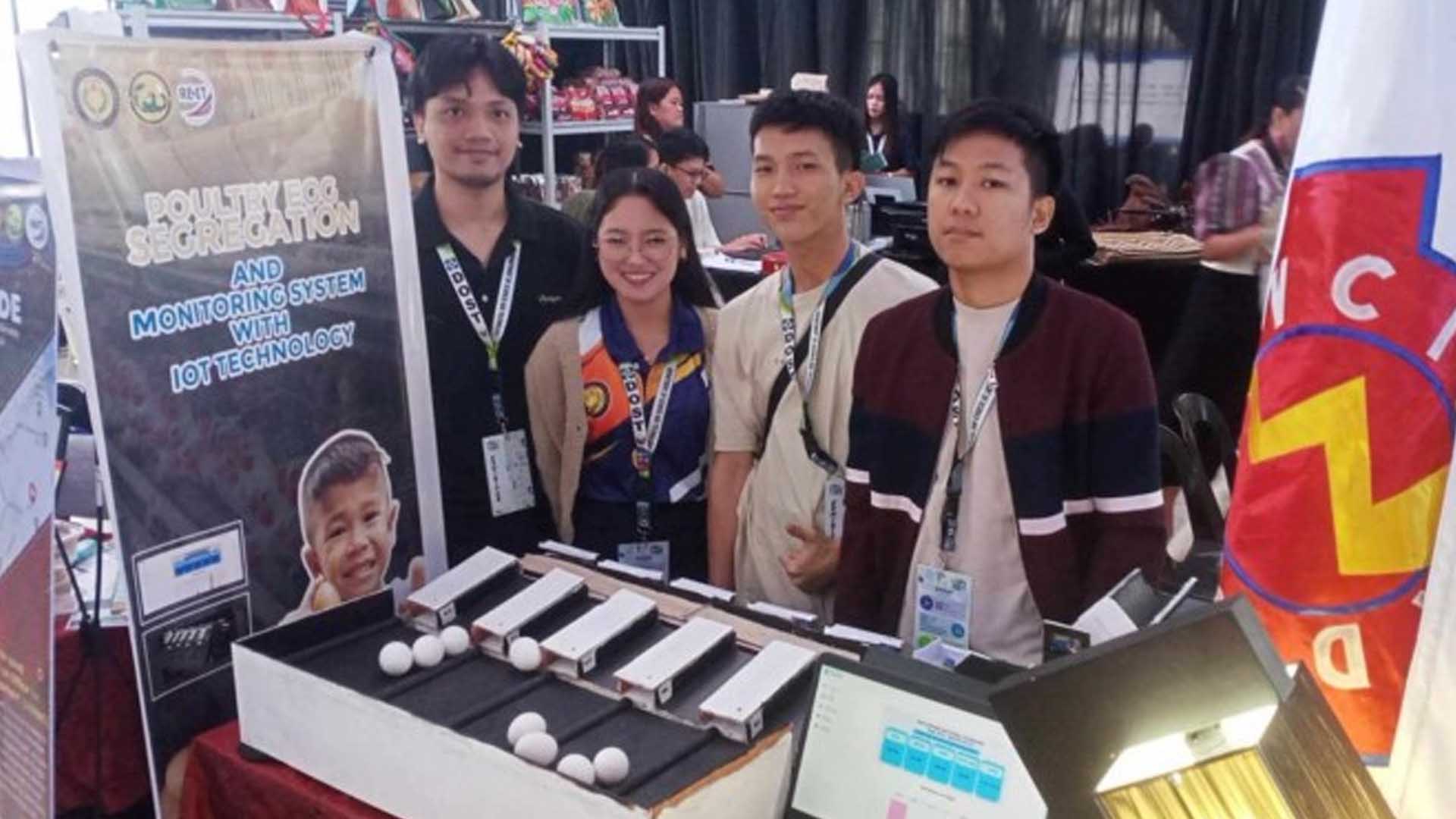Students from Leyte Normal University developed an egg segregation and monitoring system to reduce human errors and workloads in traditional poultry farming.
Senior Bachelor of Science and Technology (BSIT) researchers exhibited a prototype of their designed poultry egg segregator hardware and their webpage used to monitor data dubbed PESM (Poultry Egg Segregation and Monitoring) during the three-day 2024 Eastern Visayas Regional Science, Technology, and Innovation Week (RSTW) that kicked off Wednesday at the People’s Center and Library.
“The local poultry farmers in Tanuan, Leyte, told us during our interviews that they have been experiencing a slow egg-sorting process. This traditional method also caused errors as they only log their inventory data on paper, which can be lost easily,” said Mark Angelo Asoy, the group’s research leader.
The other researchers are his classmates, Andrew Agna, Maricris Nebril, and Earl Cartney Centino.
“With our project, they can digitally store, retrieve, download, and generate reports,” Asoy added.
With the thesis title, “Development of Poultry Egg Segregation and Monitoring: With IoT (Internet of Things) Technology,” developers used Arduino, an open-source electronic platform for building projects, and sensors to implement the egg segregator hardware.
The system can automatically classify poultry eggs into various sizes and weights, such as small (40 grams–49 grams), medium (50 grams–54 grams), large (55 grams–59 grams), extra-large (60 grams–64 grams), and jumbo (70 grams and above), without the need for human intervention and just by using the hardware.
Poultry farmers and operators can create an account using a registered email. One feature of the PESM system is it allows users to monitor their poultry egg segregation remotely and in real-time.
“Famers need to adapt to the technological advances to cope with the issues in traditional farming as well as to lessen their workloads,” Asoy added.
The Department of Science and Technology (DOST) has invited the group to display their research during the exhibit, as it is one of the studies offering solutions.
DOST Eastern Visayas acting regional director John Glen Ocaña said the exhibit provided a platform that showcased the technologies developed by the Department of Science and Technology and its research and development institutes.
“These technologies will open doors of unique opportunities to local government units, state universities and colleges, micro, small, and medium enterprises, industry, and the general public for science and technology-based businesses, providing solutions to the needs of our communities in the region,” Ocaña said in a speech Wednesday.
This year’s RSTW theme is “Bluer and Smarter Eastern Visayas: DOST providing solutions and opening opportunities.” (PNA).







